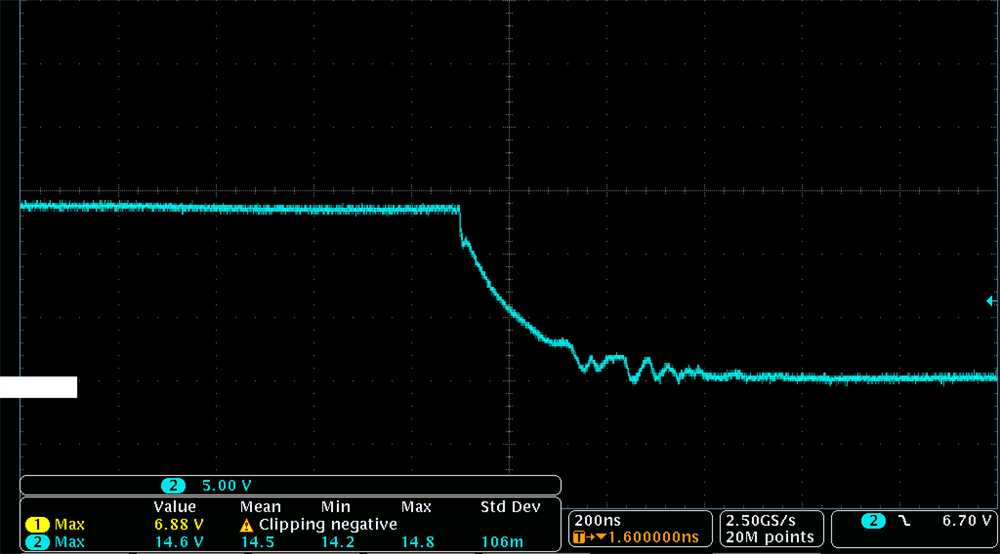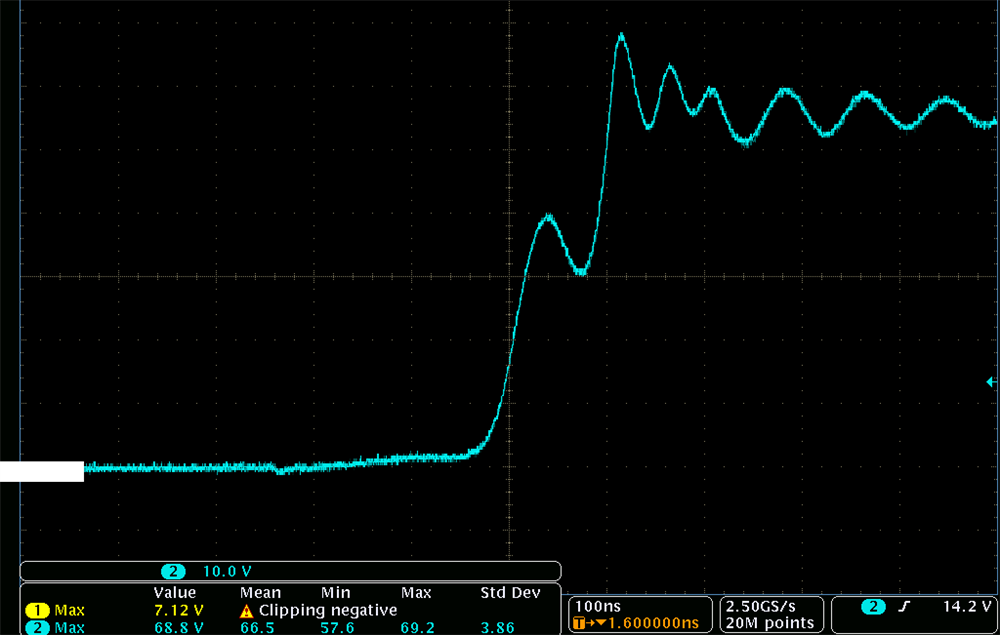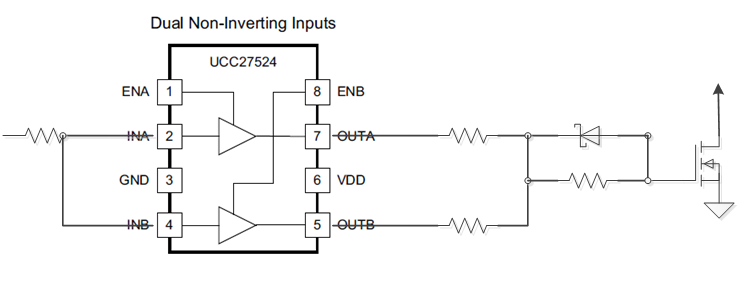Other Parts Discussed in Thread: CSD19506KCS,
Hi,
I have an application were a single UCC27324 (output channels in parallel) drives three CSD19506KCS in parallel. Each of the MOSFETs has separate 6ohm gate resistor. I want to decrease the switching loss inside the MOSFETs during turn-off. The switched current is about 85A and the switched voltage around 60V. The UCC27324 is supplied with 15V. The measured Drain-Source and Gate-Source Waveforms are attached.
Gate-Source
Drain-Source
I am thinking about decreasing the gate-resistance to increase the quite slow switching speed. Are there recommended gate-resistor values for this combination?
The datasheet of the UCC27324 states an absolute maximum current of 4.5A and minimum input resistance of 0.9 Ohm (over full range). If I decrease the gate resistors to 1 ohm I calculate an overall resistance of 0.78 Ohm (2 channels in parallel = 0.45 Ohm + 3 resistors in parallel = 0.33Ohm). Neglecting trace resistance and inductance I calculate a maximum current peak of 19A (15V / 0.78A). This is way higher than the maximum rating in the datasheet (8A for the combined channels). However the "Current Sink Test Circuit" from the UCC27324 datasheet does not have any current limiting resistance in the path between the capacity and the gate driver.
Do you think it is okay to drop the gate-resistance to 1 Ohm per MOSFET or even decrease it to 0 Ohm?




